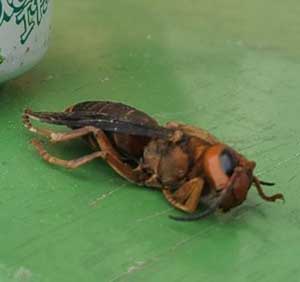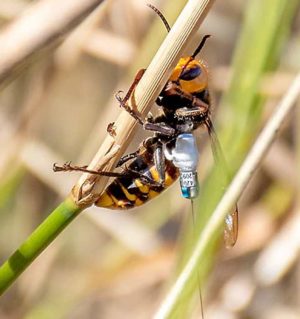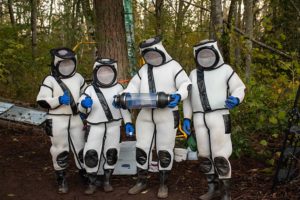Two Washington State University entomologists have released a guide for beekeepers to recognize and even prevent damage to their colonies by Asian giant hornets.
The publication, titled “Distinguishing Asian Giant Hornet Damage to Honeybee Colonies,” aims to help beekeepers tell the difference between the effects of Asian giant hornets, sometimes nicknamed “murder hornets,” and other animals, according to a news release from the university.
The most noted symptom of an Asian giant hornet attack on honey bees is headless bees; but mice, yellow jackets and other animals can cause similar-looking damage, the release said.
Brandon Hopkins, a honey bee researcher well-known to the fruit industry, has found dead bees with heads torn off at the new WSU Honey Bee and Pollinator Research, Extension and Education Facility in Othello, the release said. After he investigated, he determined mice had been eating bees that died naturally and had fallen to the bottom boards of colony boxes or on the ground nearby.
The guide also discusses some research done with netting wide enough for bees but not the giant hornets.
The guide is free to download at: https://pubs.extension.wsu.edu/distinguishing-asian-giant-hornet-damage-to-honey-bee-colonies.
Suspected Asian giant hornet sightings in Washington should be reported to the Washington State Department of Agriculture at: agr.wa.gov/hornets, by emailing: hornets@agr.wa.gov or by calling: 1-800-443-6684.
—by Ross Courtney









Leave A Comment